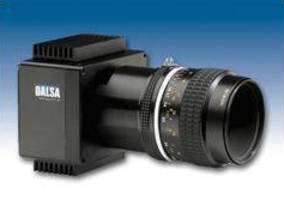TDI Line Scan Camera suits machine and process monitoring.
Share:
Press Release Summary:

Featuring 4,096 x 48 or 96 pixel resolution and CameraLink data transfer interface, DALSA Piranha HS-82-04K provides max line rate of 110 kHz and throughput up to 640 MHz. Selectable area mode of operation facilitates camera alignment and optical focusing. Capable of bidirectional scanning, camera has up to 96 selectable stages and prevents over-exposure with 100x anti-blooming. Time Delay Integration technology maximizes integration time available to collect incident light from moving object.
Original Press Release:
DALSA Piranha HS: High Speed Low Light Camera for Machine and Process Monitoring
The DALSA Piranha HS family of TDI (Time Delay Integration) linescan cameras is unique in the machine vision industry, offering an alternative to traditional linescan imaging. STEMMER IMAGING can now offer the latest addition to this range, the new Piranha HS-82-04K series with 4096 x 48 or 96 pixel resolution and CameraLink data transfer interface. The new range not only provides the fastest speed available in a TDI camera, with a maximum line rate of 110 kHz and throughput up to 640 MHz, but its unique characteristics can also reduce the number of machine vision components required for many applications, significantly reducing overall costs.
The versatile Piranha HS-82-04K offers a selectable 'area mode' of operation which facilitates camera alignment and optical focussing. The cameras are capable of bidirectional scanning and have up to 96 selectable stages, while preventing overexposure with 100x anti-blooming. Camera configuration is extremely flexible with the number of CameraLink taps, throughput and line rate controlled through software. Other programmable features include bit depth, flat field correction, direction control, and gain and offset control.
TDI technology effectively increases the integration time available to collect incident light from a moving object compared to other video scanning methods in applications from wafer, PCB, and LCD panel inspection to high-end document scanning. This enhanced sensitivity to low light levels allows reduced lighting levels (and costs) at conventional speeds or the speed of the target object or inspection web to be increased at conventional light levels.
With less light required, high-frequency AC or standard LED lighting can be used instead of high-powered, high-cost lighting, such as halogen, thus significantly lowering initial system costs and on-going maintenance costs.
The high line rates and sensitivity of the Piranha HS series may also make it possible to reduce the total number of cameras needed in an application. This would bring significant cost savings since this would also reduce the number of frame grabbers, lenses, computers and cables required.




